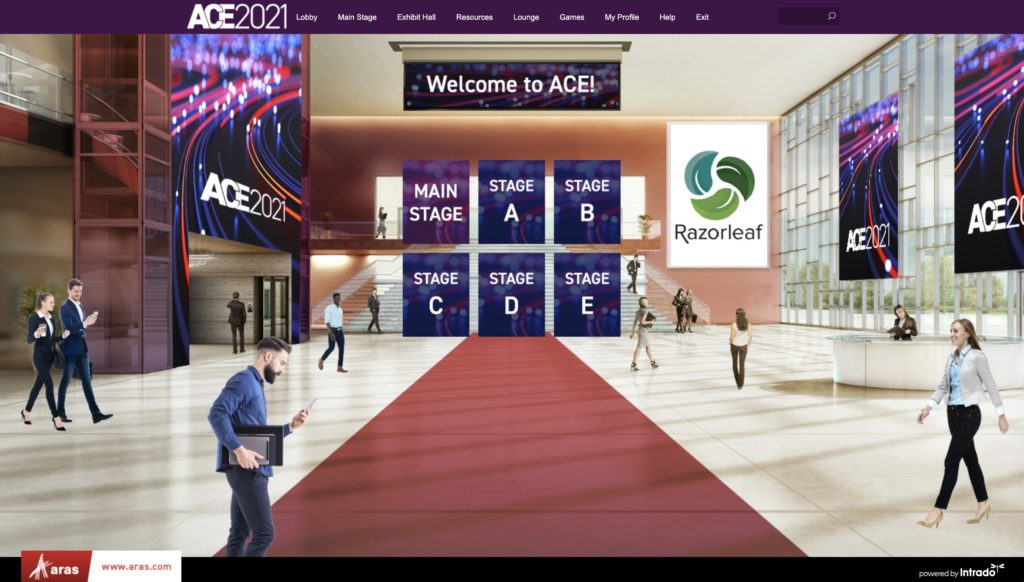
Earlier this week, I attended ACE2021. It was the second Aras conference completely virtual. Last year, Aras was one of the first companies that canceled their annual meeting because of COVID19. I can say that I was impressed with the organization of virtual space and presentations.
The graphic arrangement of virtual space sometimes looks a bit creepy with pictures of people and spaces, but the overall feeling is very positive. The presentations are available on-demand (strangely enough, few presentations cannot be repeated, including Peter Schroer’s welcome message), which in general leaves no point in watching them at the same time when the conference runs. However, the ACE2021 lobby space has a possibility for virtual communication and it is a nice feature I liked.
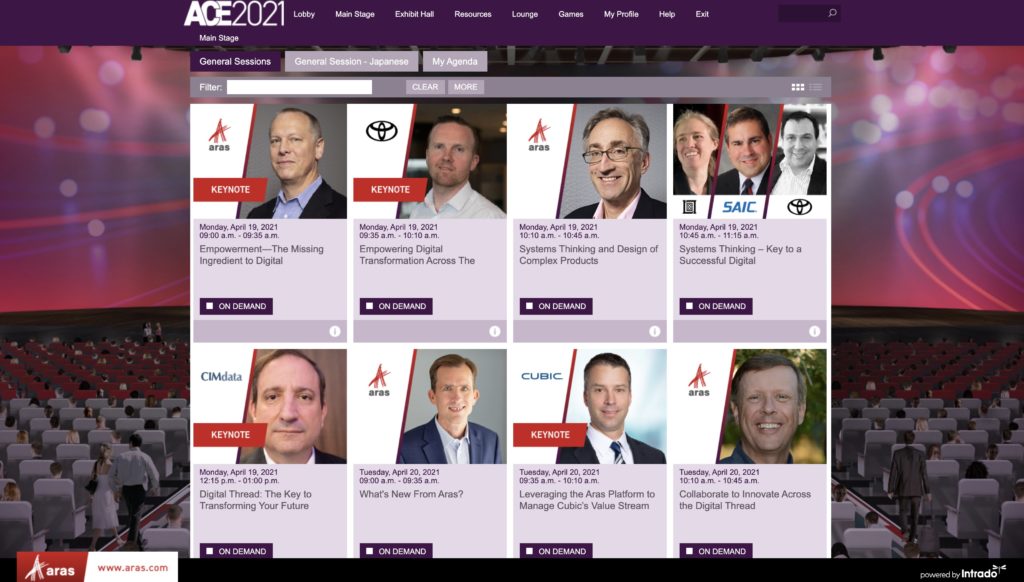
While I’m still digesting and watching multiple presentations, my first focus at ACE2021 was to learn about the new Aras Enterprise SaaS. The cloud and SaaS topic is super hot in the PLM industry. It started from multiple acquisitions done by PTC (2019 – Onshape) and (2020- Arena Solutions). Last year, we saw Siemens move into SaaS with their TeamCenterX product offering and Autodesk just acquired yet another cloud PLM vendor – Upchain. All these events are giving an indication that manufacturing companies are moving to the cloud and PLM vendors are trying to figure out what to do and some of them are playing the catchup with SaaS/cloud technologies and products.
Aras Enterprise SaaS
In a nutshell, Aras has a new offering -enterprise SaaS. It is a fully managed hosted environment, which is run by Aras. The tech stack behind is Microsoft / Azure. This is the only hosting platform supported for the moment. The environment is called “all-inclusive” and it gives the customer a full stack of options, features, functions, and services provided by Aras. The price is unknown, Aras only shares standard pricing. You need to contact Aras to get enterprise SaaS prices.
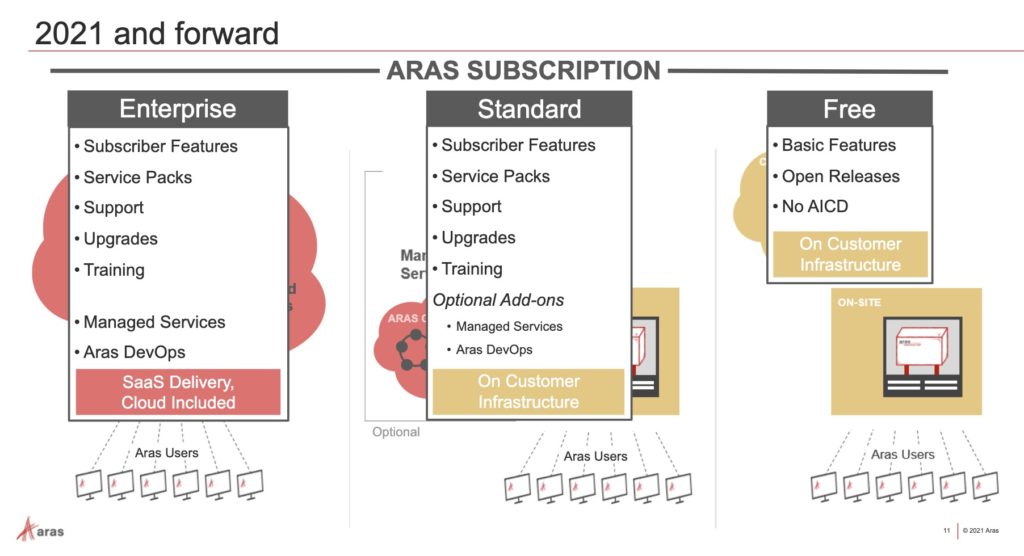
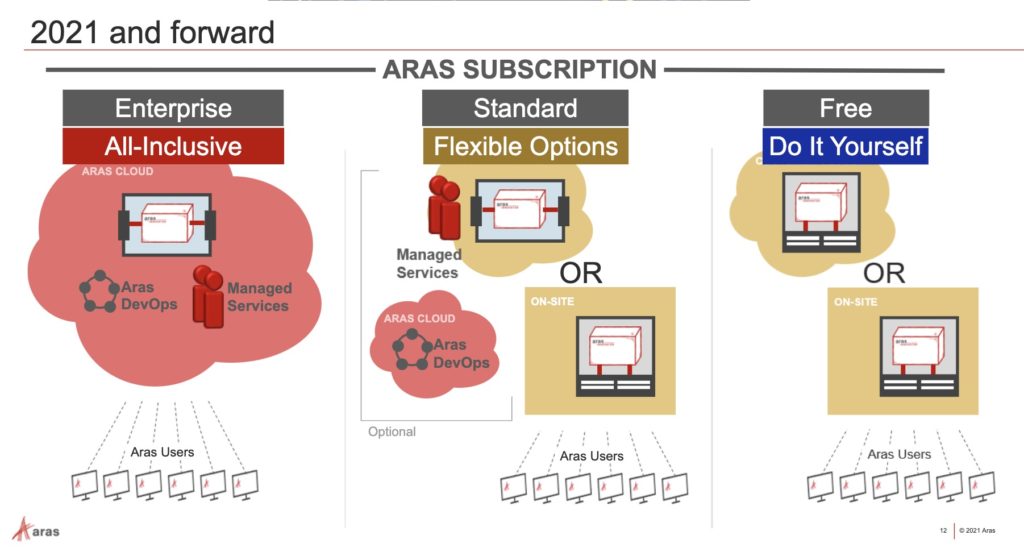
Here are a few things I learned about Aras current product and technology trajectory. These are 5 topics I wanted to share what I learned – (1) AICD and Enterprise SaaS, (2) Vision of Digital Thread and connected technologies, and (2) Machine Learning and the opportunity for machine learning in BOM management.
AICD, Containers and Enterprise SaaS.
The magic word AICD stands for Aras Innovator Cloud Deployment. Also called “Aras Cloud”. In a nutshell, it is an environment that hosts Aras Innovator and supports automatic deployment (aka DevOps) and currently is only available on Azure. The fundamental technology behind is containers.
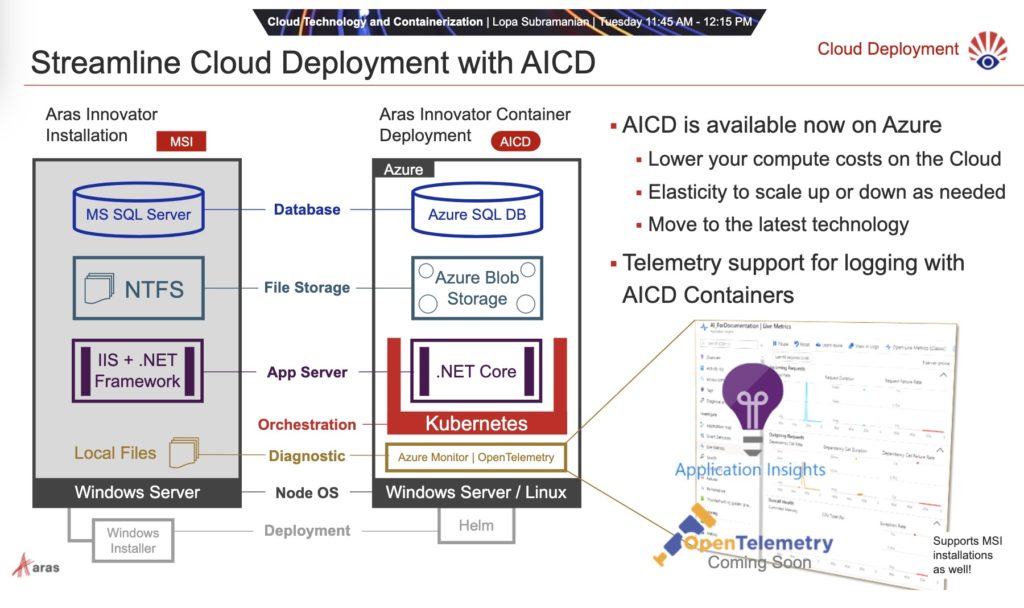
Aras spent a lot of time speaking about Containers and related technology during the event educating everyone on what is that and why it is needed – reminded me of my article from 2014 – Why Ask Cloud PLM Vendors about DevOps and Kubernetes.
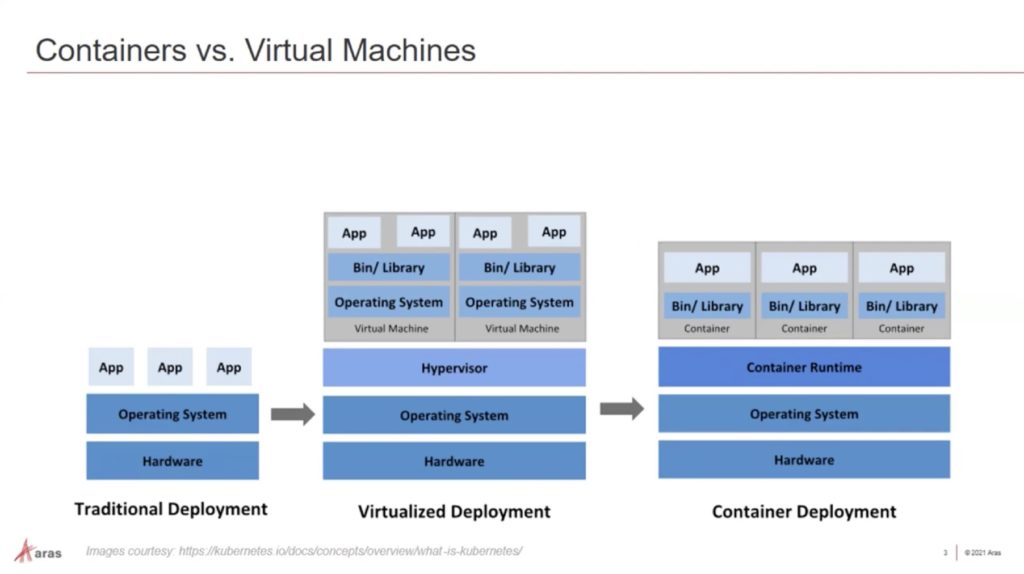
Digital Thread and Connected Data
Aras technology vision presentation was delivered by Rob McAveney. He spoke about System Thinking, Digital Thread, and Digital Twins for new business models. Aras projection is on how modern connected technologies are going to change PLM systems.
Digital Thread is an important topic. I like these slides about the reality of the disconnect between vendors and data and how everything is connected in the digital thread. It is a good vision. As far as I understand, the vision of Aras digital thread is a single environment based on Aras database that combines all information together. Not clear how all these islands are connected and how to prevent a single vertical platform black hole.
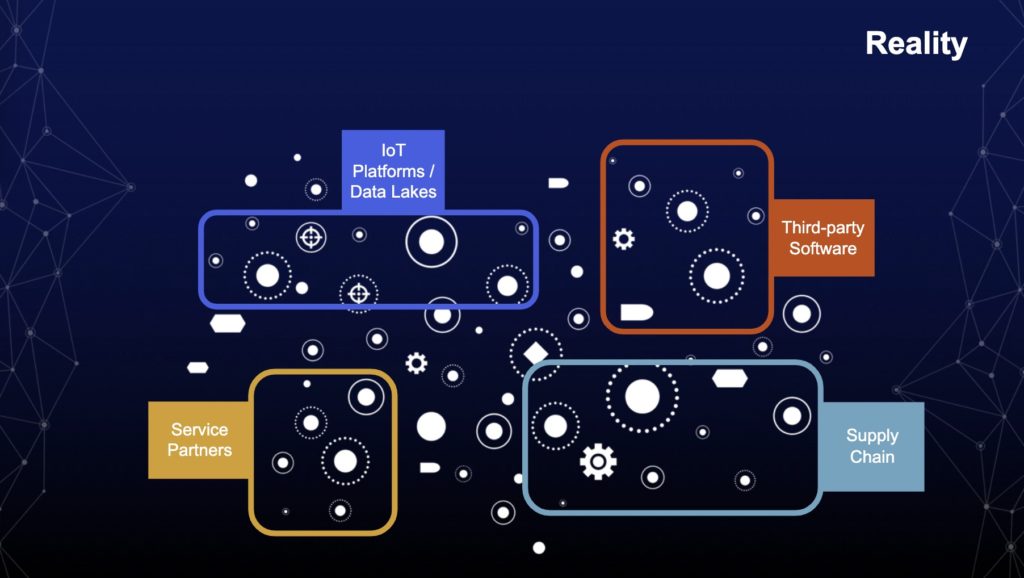
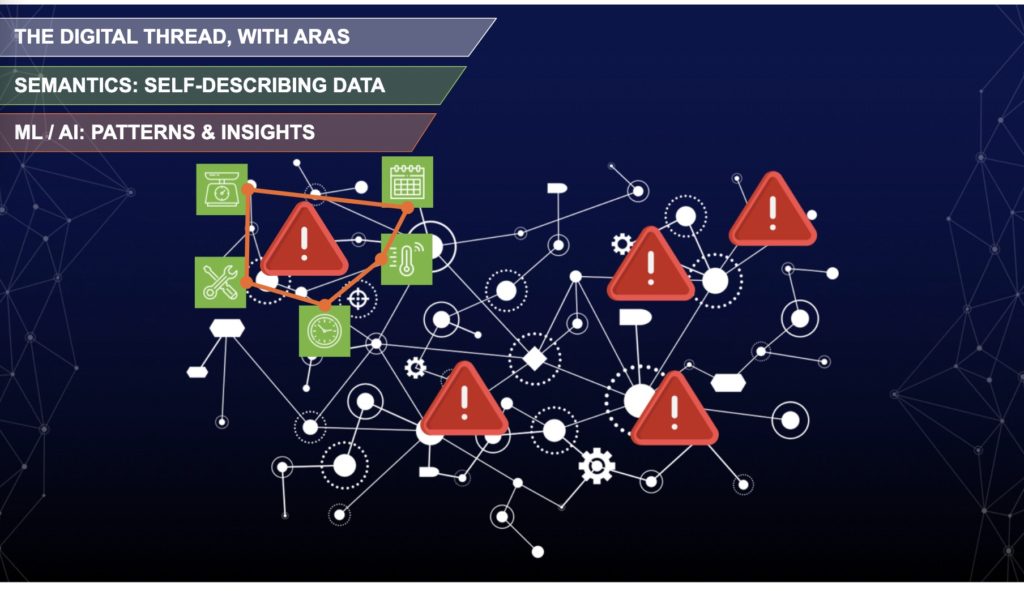
Machine Learning and Bill Of Materials
My favorite part of Aras tech vision presentation was about machine learning and examples of the Bill of Materials. BOMs present a fundamental piece of information about the product. Running machine learning predictions on BOMs can be a super interesting outcome. It reminded me of my BOM, Graphs, and Networks articles.
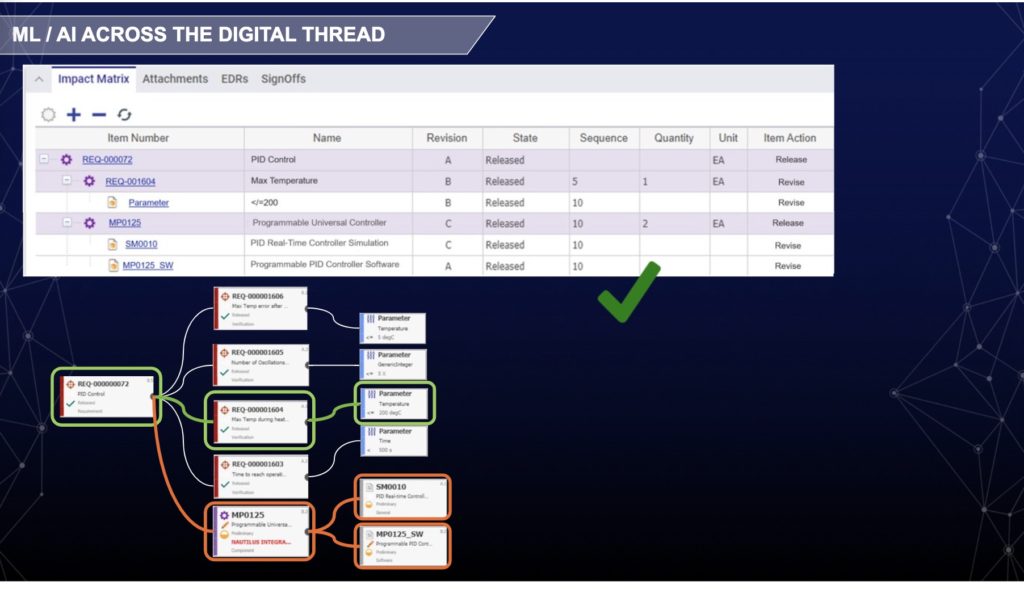
What is on Aras roadmap in the future?
There are a number of important topics that are on the TODO list for Aras. It looks like Aras is working hard to eliminate the SaaS / Cloud limitations of Aras platform. The things are related to the use of Microsoft’s only technological stack and some others. Aras cloud is only MS Azure and containers are only Windows. Some of Aras functionality is limited and cannot be containerized (yet). These are services such as enterprise search reporting and some others.
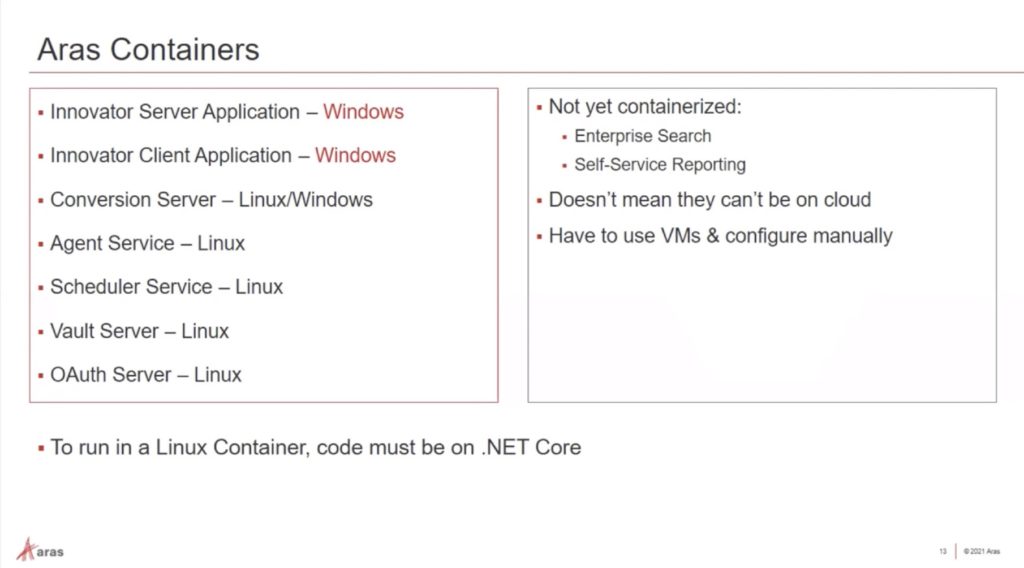
NET Core is the only path for Aras towards Linux machines. You can see it from the slides and Aras is promising to work on this.
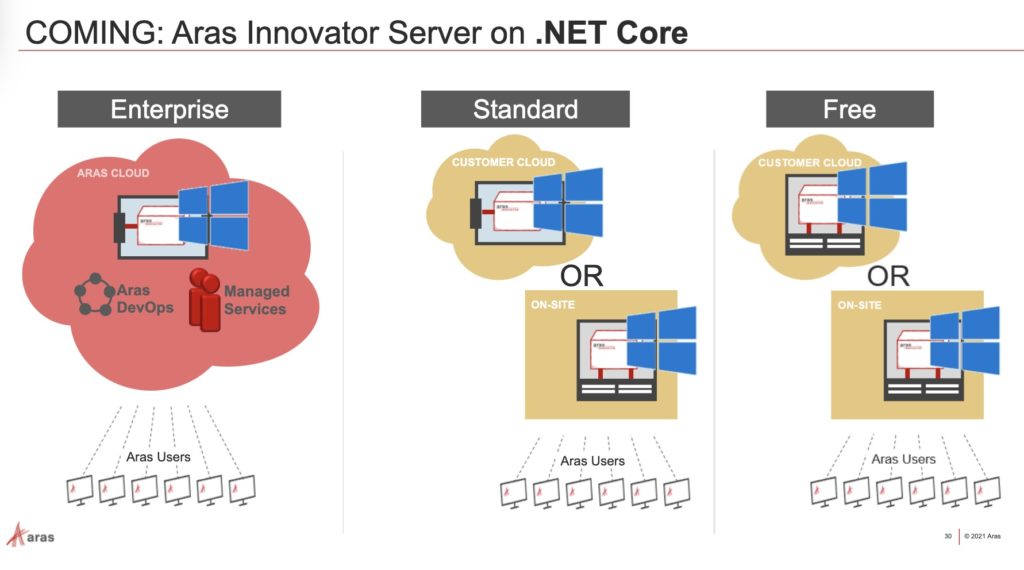
Another place that requires improvement is Federation Service, which is the way for Aras single-tenant platform to share data in external enterprise. To overcome this problem Aras is planning to develop an external portal for users outside of Aras core.

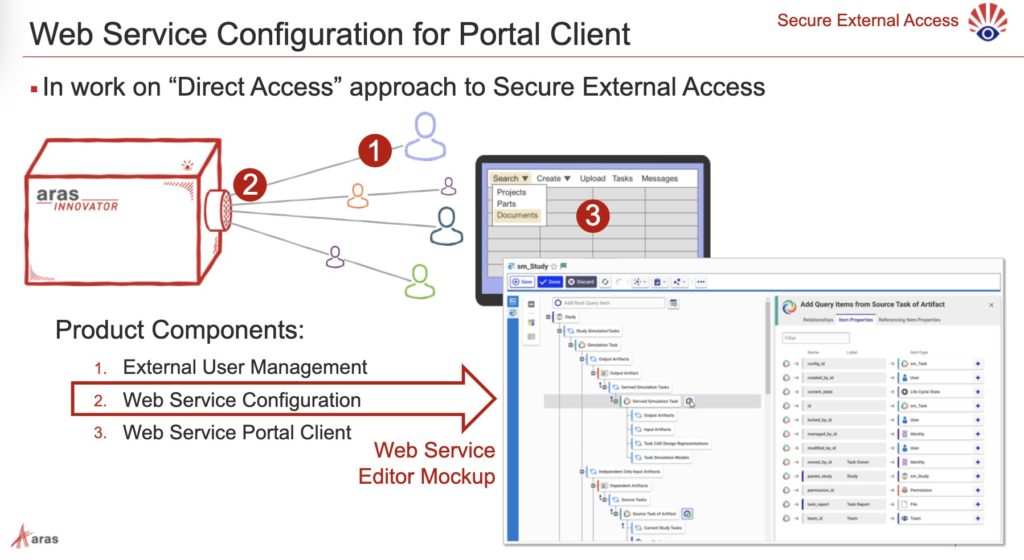
What is my conclusion?
Aras is on the important element of their technological development trajectory that requires to match the demands of enterprise IT and SaaS/Cloud deployment. While this is kind of a challenge, Aras bet on enterprise companies’ slow adoption of cloud / SaaS, which leaves enough space for them to close the gap. Together with that, Aras vision remains solid on the topic of complex and flexible data modeling and low-code development foundation (which is in a nutshell Aras data model). The main Aras competitors (Dassault, Siemens and PTC) are aggressively moving to the cloud and SaaS native companies are becoming more mature and legitimate solutions for midsize companies and some usage for large enterprises. It is a very interesting time in the PLM industry. Just my thoughts…
Best, Oleg
Disclaimer: I’m co-founder and CEO of OpenBOM developing a digital network-based platform that manages product data and connects manufacturers, construction companies, and their supply chain networks. My opinion can be unintentionally biased.
The post What did I learn at ACE2021 and Where Aras Is Heading? appeared first on Beyond PLM (Product Lifecycle Management) Blog.



Be the first to post a comment.